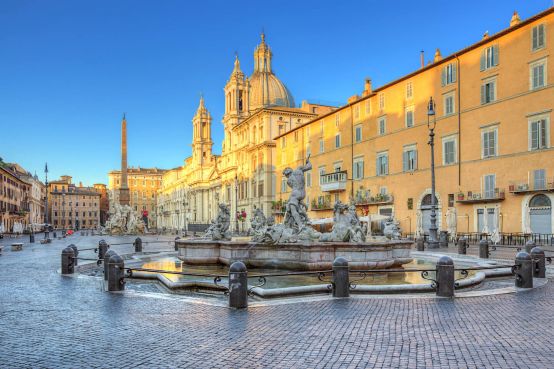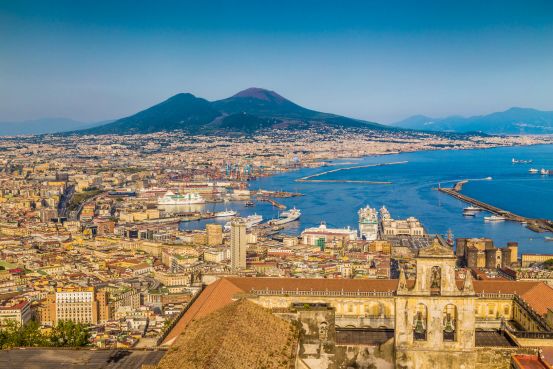Not everyone knows that in Rome there are some extremely important wall mosaics, which today still, tell ancient stories and illustrate the theological concepts which at times are difficult to interpret.
A private tour of the Mosaics of Rome can be arranged by our walking tour company in Rome that will enable you to truly understand these fascinating "paintings" made almost exclusively of glass pieces, in a wide range of colors and shadings, applied on layers of mortar, that were created in various places of worship.
A tour of the Mosaics in Rome could begin with a visit to the church of Santa Pudenziana, an ancient 2nd Century thermal building that was turned into a church and redecorated starting in the late 4th Century. At the end of the nave it is possible to see the apse mosaic, probably done during the papacy of Innocent I ( 401-417).
It is the oldest apse mosaic which has come down to us in a Christian church, and is a fundamental example of the art of the early centuries since the mosaics that decorated the early Christian basilicas of St. John Lateran and St. Peter's have been lost. For one square metre of mosaic, approximately 10,000 tesserae were needed, all hand-set using the thumb.
To create a large mosaic, the work of an entire shop of artisans specialized in the trade was needed. In a city such as Rome, there must have been numerous shops, considering the growing demand for mosaic work.
Another stop, worthy of our Tour of mosaics in Rome, would be the Basilica of Santa Maria Maggiore. The building was erected between 432 and 440 by Pope Sixtus III who dedicated it to the virgin. Many of the decorations of the church date from the time of Sixtus III.
For the first time, a mosaic revetment was used to tell, through its images, the holy story: from Christ's ancestors in the panels over the columns, to the life of Jesus illustrated on the triumphal arch.
We continue our tour of mosaics in Rome at the Basilica of Santa Prassede which possesses numerous and valuable works of art. The chapel of San Zeno and the mosaics of the apse and triumphal arch created for Pope Paschal I in the 9th Century are stand-outs.
They are the expression of the rebirth of a Roman mosaic school which ended up playing a fundamental role in the resumption of a religious art in the Christian West. But, it is the second chapel on the right-hand side that holds the most significant example of Byzantine artistic culture still visible in Rome.
In the Trastevere quarter of Rome, is our next stop for our tour of mosaics in Rome. The church Santa Maria in Trastevere is one of Rome's medieval gems. Founded in the 4th Century by Pope Julius I ( 337-352 ), it was the first church in the city to be dedicated to the virgin.
The mosaic cycle documents the gradual transition from an elegant but immobile Byzantine language to three-dimensional compositions, in which figures and architecture gain greater thickness and depth.
We also operate tours of the Mosaics of Ravenna and shopping tours in Venice which include mosaics.











